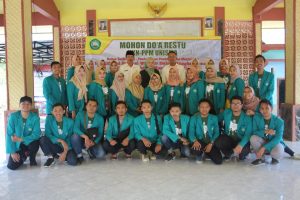Mudawamah 1 , I.D. Retnaningtyas 1 , V.M.A. Nurgiartiningsih 2 and C.D.K. Bottema 3
1 Faculty of Animal Science, Islamic University of Malang, Indonesia, 2 Faculty of Animal Science, Brawijaya University of Malang, Indonesia, 3 Faculty of Veterinary, University of Adelaide, Australia
Corresponding email: mudawamah@gmail.com
ABSTRACT
Goat genetic resources in East Java Indonesia are diverse based on genotype and phenotype. It is probably due to crossing among existing breeds existing in this province. This situation cause a problem in the identification of the goat breeds. The objective of this study was to characterize phenotype of PE goat and to analyze their similarity within populations in the different locations. Data of 472 does were analyzed using NTSYS pc version 2.0 software. Dendogram illustrated phenotypic similarity for qualitative traits within fourteen populations in the different of goat breeding areas. The observed qualitative traits were shape of the back, head, face, forehead, horns, ears, and teats. Beside that this study also observed teat and extra teat number, hair color of face, body, legs and tail. The presence and absence of qualitative traits was recorded as “1” and “0”, respectively. The binary coded characters (1, 0) were used for phenotypic similarity analysis. The results indicated that phenotypic similarity among
individuals of PE goat populations were varied and ranged between 0.50-0.84 with an
average of 0.68 + 0.11. It was concluded that phenotypic similarity of PE goats in different breeding locations of East Java was categorized as medium.
Key Words: Goat, Phenotypic similarity, Qualitative, Dendogram

